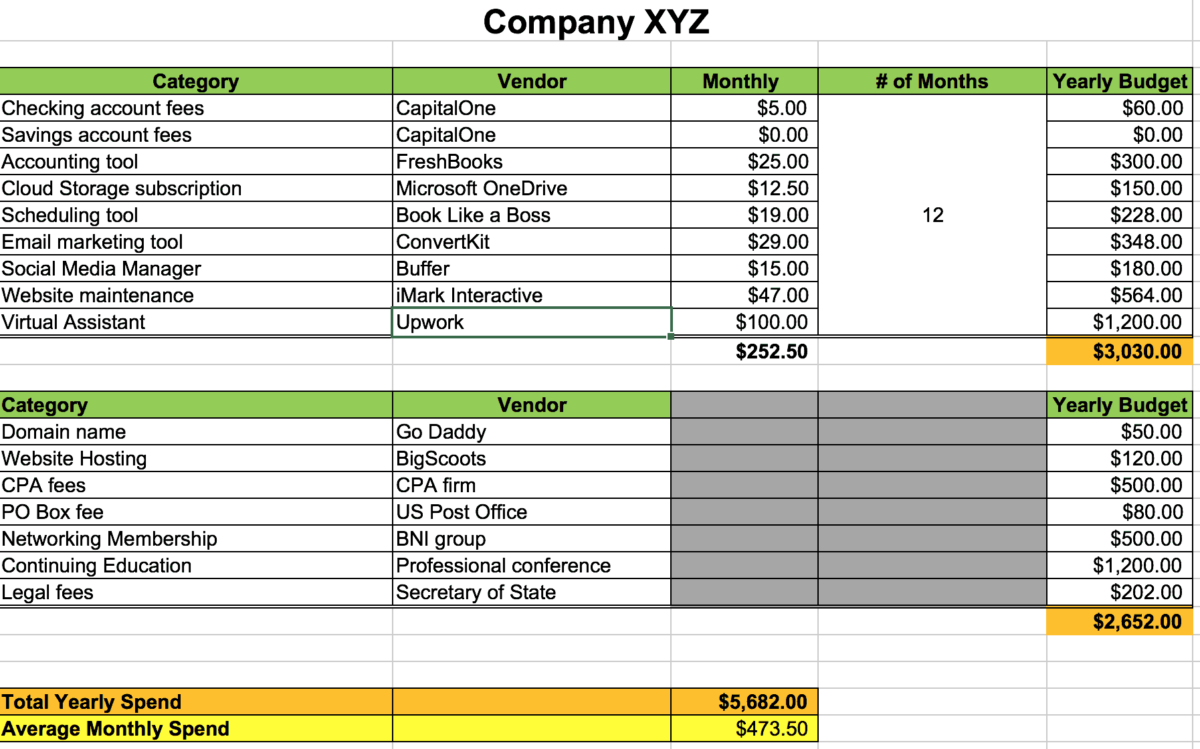In the dynamic world of business, financial management is the cornerstone of success. A well-crafted business budget serves as a roadmap for allocating resources, managing expenses, and achieving strategic objectives. Whether you’re a startup entrepreneur seeking to secure funding or an established business owner aiming to optimize financial performance, creating a comprehensive business budget is essential for making informed decisions, controlling costs, and driving sustainable growth. In this comprehensive guide, we will delve deep into the intricacies of creating a business budget, providing step-by-step instructions, advanced techniques, and practical insights to help you master financial success and propel your business forward.
Understanding the Importance of a Business Budget:
Before diving into the process of creating a business budget, let’s first understand its significance:
- Financial Planning: A business budget provides a framework for planning and managing financial resources effectively.
- Resource Allocation: Budgeting helps allocate resources to key business activities such as operations, marketing, research and development, and expansion initiatives.
- Decision Making: A well-defined budget facilitates informed decision-making by providing insights into revenue projections, cost structures, and profitability metrics.
- Performance Evaluation: Budgets serve as benchmarks for evaluating business performance and identifying areas for improvement.
Steps to Create a Business Budget:
Now, let’s explore the step-by-step process of creating a business budget:
- Gather Financial Data:
- Collect relevant financial data, including historical income statements, balance sheets, cash flow statements, and expense reports.
- Define Budget Period:
- Determine the time frame for the budget, whether it’s monthly, quarterly, or annually, based on your business cycle and planning horizon.
- Identify Revenue Sources:
- Identify all potential revenue sources for your business, including product sales, service fees, subscription revenue, and other income streams.
- Estimate Revenue:
- Project future revenue based on historical data, market trends, sales forecasts, and business growth projections.
- Determine Fixed Costs:
- Identify fixed costs or overhead expenses that remain constant regardless of business activity, such as rent, utilities, salaries, and insurance premiums.
- Calculate Variable Costs:
- Determine variable costs associated with production, sales, and operations, such as raw materials, direct labor, marketing expenses, and sales commissions.
- Account for One-Time Expenses:
- Include any one-time or non-recurring expenses, such as equipment purchases, software licenses, or marketing campaigns, in the budget.
- Factor in Contingencies:
- Allocate a portion of the budget for contingency or unforeseen expenses to account for unexpected events or fluctuations in the business environment.
- Create Budget Categories:
- Organize expenses into categories such as personnel, marketing, operations, research and development, and administrative expenses for clarity and accountability.
- Set Budget Targets:
- Establish realistic targets and goals for each budget category based on historical performance, industry benchmarks, and business objectives.
- Review and Finalize:
- Review the budget to ensure accuracy, completeness, and alignment with strategic priorities.
- Seek input from key stakeholders, such as department heads, managers, and financial advisors, to validate assumptions and identify potential gaps or areas for improvement.
- Monitor and Adjust:
- Implement a system for monitoring budget performance regularly, tracking actual expenses against budgeted amounts, and making adjustments as needed to stay on course.
Advanced Techniques and Tips:
To further enhance your budgeting process and optimize financial management, consider the following advanced techniques and tips:
- Use Budgeting Software:
- Leverage budgeting software or financial management tools to streamline the budgeting process, automate data analysis, and generate detailed reports.
- Implement Zero-Based Budgeting:
- Consider adopting zero-based budgeting, where expenses must be justified for each budgeting cycle, to ensure optimal resource allocation and cost control.
- Forecast Cash Flow:
- Forecast cash flow in conjunction with the budget to anticipate funding needs, manage working capital, and ensure liquidity for day-to-day operations and strategic investments.
- Collaborate Across Departments:
- Foster collaboration and communication across departments to align budgeting efforts with business objectives, identify synergies, and promote accountability.
- Review and Adjust Regularly:
- Conduct regular reviews of the budget to assess performance, identify variances, and make proactive adjustments to optimize financial outcomes.
Conclusion:
Creating a business budget is a foundational step in financial planning and management, essential for guiding strategic decisions, controlling costs, and achieving long-term success. By following the comprehensive guide outlined above, businesses can effectively craft a budget that aligns with their objectives, resources, and market dynamics, enabling them to navigate uncertainties, capitalize on opportunities, and drive sustainable growth. Whether you’re a small startup or a large corporation, mastering the art of budgeting empowers you to harness the full potential of your financial resources and steer your business toward prosperity and resilience. So embrace the power of budgeting, embark on your budgeting journey with confidence, and unlock new pathways to financial success and strategic agility.
